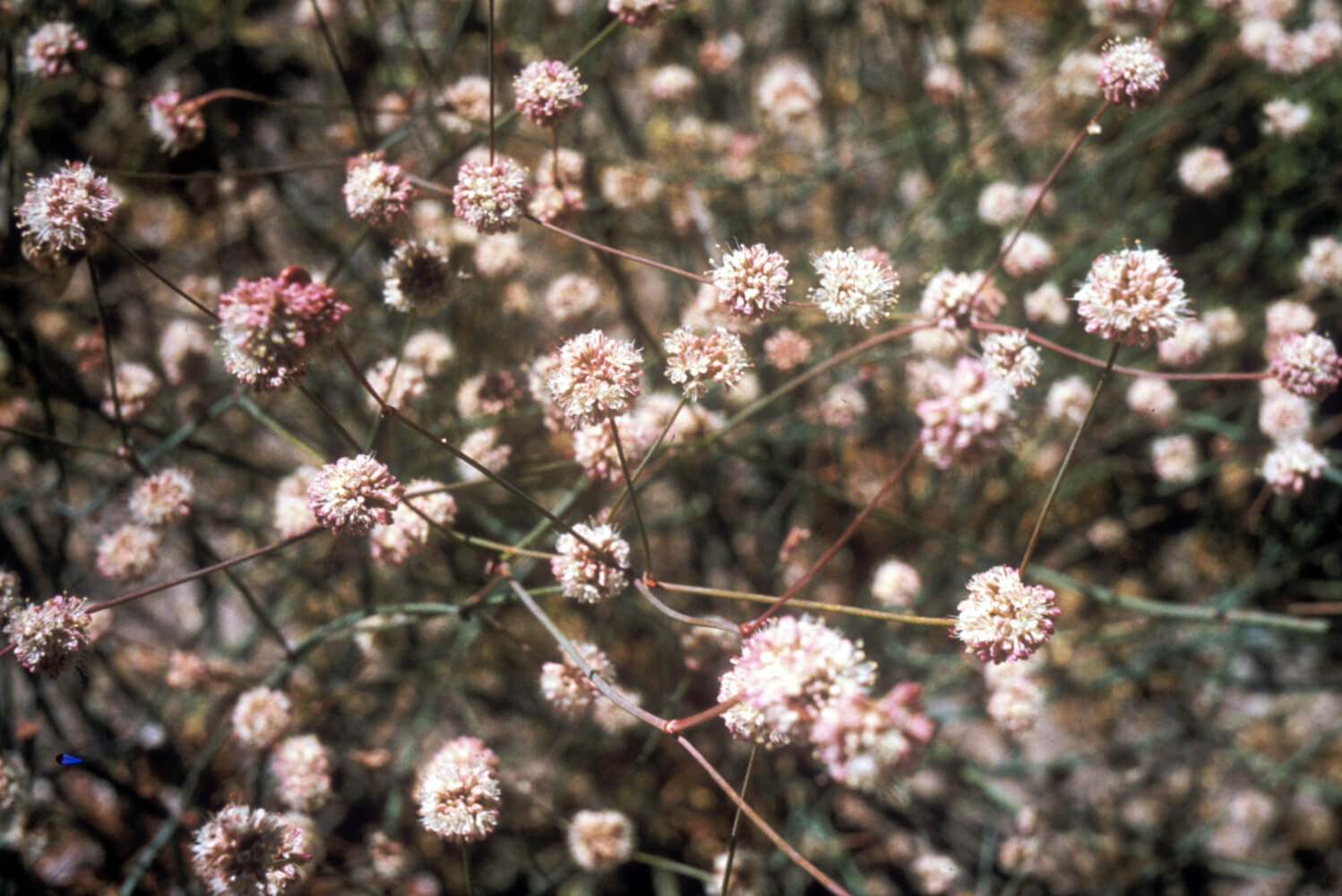Coast Buckwheat is found growing in the wild along coastal bluffs and dunes, and within the coastal scrub community. Various Eriogonum species also grow further inland at the edges of chapparal, in grasslands and in montane habitats. All Eriogonums need full sun and good drainage; and are wonderful garden plants when these conditions are provided.
In the garden Eriogonum latifolium adds both visual interest and habitat resources to a mixed border planting. The grey-green felted leaves contrast beautifully with various shades of green; good companions are Seaside Daisy or Pacific Reed Grass. The low mounded shape of the plant makes it a good choice for the front of the border, and allows it to grow nicely between decorative rocks.
Coast Buckwheat flowers are a creamy white, which dry to an attractive rusty brown, and persist on the plant through the fall season. The abundant, and long-blooming pom-pom like flower heads attract many beneficial insects, including bees and butterflies, which come to sip nectar from the individual flowers. Birds and insects eat the tiny seeds. The plant also serves as host of the larvae of many of the “Gossamer Winged” butterflies; such as Acmon and Dotted Blues in more inland locations, and Blue Coppers and Hairstreaks in coastal areas.
E. grande x latifolium – Red-Flowered Buckwheat
Flowers are a variety of colors; from a white-touched pink to cherry red

